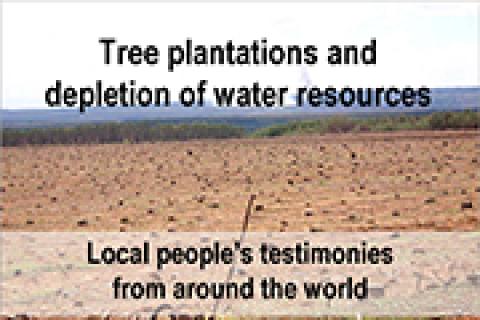A presentation with local people’s testimonies from around the world.
Download as pdf
Other information
In 1998, the World Bank and WWF announced a new ‘Forest Alliance’ with the target of securing 200 million hectares of certified forests in World Bank client countries by 2005. The Alliance has faced a serious challenge in reaching this goal.
In order to facilitate transparency and be guided during the implementation of its new Forests policy, the Bank announced that it would set up an External Advisory Group (EAG) to interact with the Bank. The group would ‘have the task of providing independent advice’ on forests to the Bank, ‘and have the right to disclose those recommendations’. This group would include people from client governments, indigenous peoples, local communities, civil society, the private sector, the ‘international forest community’, and multilateral and bilateral agencies.
The International Finance Corporation is the member of the World Bank Group which lends directly to the private sector or purchases equity stakes in private sector companies that do business in developing countries. But the IFC’s stated role goes beyond helping to generate profits for the private sector companies and their shareholders. According to its mission statement, the IFC exists to reduce poverty and improve people’s lives through sustainable private sector development.
A superficial reading of the World Bank’s Forests Policy suggests that it implies a proscription prohibiting World Bank funding of projects that it determines may damage ‘critical forests’. However, a closer reading of the policy suggests otherwise. This is because, in the first place, it is Bank operational staff and not others, who will decide what areas of forests are ‘critical’ and what are not.
The World Bank held nine regional consultations with governments, industry and civil society organizations all over the world during 2000 and 2001. The stated purpose of this far-flung effort was to receive input into the development of the Bank’s new Operational Policy on Forests.
A virtue of the 1991 Forests Policy was its simplicity. Following the shattering revelations in the 1980s about the huge areas of rainforest being destroyed in World Bank-funded projects – building dams, roads, oil wells, plantations and in colonisation and logging -the 1991 policy instructed Bank staff to stay clear of any projects that could damage primary moist tropical forests.
The concept of carbon trading as an instrument to ‘avert dangerous climate change’ first surfaced in the negotiations that resulted in the UN Framework Convention on Climate Change (UNFCCC) of 1992. Under the UNFCCC, projects claiming to reduce greenhouse gas emissions could sell the ‘saved’ emissions to a company that finds it more lucrative to pay someone else to reduce emissions rather than to reduce them themselves.
The Global Environment Facility (GEF) is the main intergovernmental mechanism for addressing “global” environmental problems, including the loss of biodiversity. It is the main vehicle for funding the United Nations Convention on Biological Diversity (CBD). Since its formation in 1991, forest-related projects have accounted for between 30 and 50% of the GEF’s annual spending on conservation. By June 2003, the GEF had allocated $778 million USD in grants for 150 forest conservation projects.
For the second time, the Clean Development Mechanism's (CDM) Executive Board has rejected the reasons of Vallourec & Mannesmann do Brasil for requesting carbon credit money for industrial tree plantations.
In early March 2005, the first carbon sinks project promoted by the World Bank's BioCarbonFund entered the first stage of registering as a CDM project under the Kyoto Protocol. Around the same time, a template document for BioCarbonFund sinks project developers to estimate sequestration rates was posted on the World Bank carbon finance website. The template used some slightly irreverent examples to illustrate how to fill in certain fields. The highlight was in the section “Contact (preferably email)” which was filled in “ fred@data_fiddling_Inc.jail.com ”.


